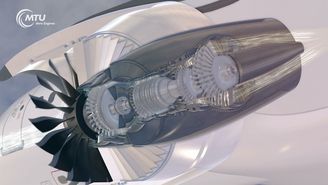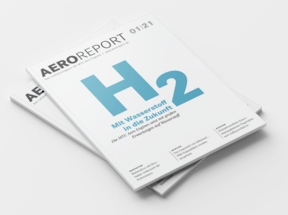The Water-Enhanced Turbofan (WET) aims to utilize residual heat from the engine’s exhaust gas stream and use it together with a steam generator to vaporize water, which is then injected into the combustor. Recirculating residual heat promises to increase engine efficiency, while wet combustion should lead to a massive reduction in nitrogen oxide (NOx) emissions. The water for this will be extracted from the exhaust gas by means of a condenser and then separated. The WET concept should facilitate an overall reduction in fuel consumption, CO2 emissions, NOxemissions, and the formation of contrails.
The Water-Enhanced Turbofan can run on kerosene, sustainable aviation fuels (SAFs), or hydrogen, and is suitable for use on short-, medium-, and long-haul routes. Using hydrogen to power WET would bring further advantages—not only lower climate-relevant emissions, but also potential reductions in the weight and drag of the propulsion system resulting from a more compact design. This is because the heat exchangers the concept requires could exploit the cooling potential offered by ultracold hydrogen.
SWITCH consortium combines future technologies
Building on a Pratt & Whitney geared turbofan, the SWITCH consortium is combining WET technology with hybrid-electric propulsion elements for future engines. SWITCH, which stands for Sustainable Water-Injecting Turbofan Comprising Hybrid-Electrics, is a research project funded by the EU’s Clean Aviation research program. The project partners include MTU, Pratt & Whitney, Collins Aerospace, GKN Aerospace, and Airbus, as well as other players in the aviation industry. MTU leads the consortium. These new technologies are also suitable for operation with SAF. The future use of hydrogen as an energy source is also being evaluated.





